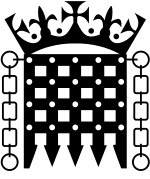Sir Charles Turner, 1st Baronet, of Warham
Sir Charles Turner, 1st Baronet (11 June 1666 – 24 November 1738) of Warham, Norfolk was a British politician who sat in the House of Commons for 43 years from 1695 to 1738. [1]
He was the son of William Turner, attorney-at-law, of North Elmham, Norfolk, and was educated at Caius College, Cambridge and trained for the law at the Middle Temple. He was knighted on 22 March 1696.
Turner was a Lord of Trade in 1707-13, a Lord of the Admiralty in 1714-17, Lord of the Treasury in 1720-30, and Teller of the Exchequer from 1729 to his death. He was created a baronet on 27 April 1727.
He was returned as Member of Parliament for King's Lynn in 1695. He held the seat until his death in 1738 having become Father of the House in 1730.
Turner firstly married Mary, daughter of Robert Walpole and with her had a son (who predeceased him in 1724) and 4 daughters. He later married Mary, the daughter of Sir William Blois of Grundisburgh, Suffolk and the widow of Sir Nevil Catelyn of Kirby Cane. He was succeeded by his younger brother Sir John Turner, 2nd Baronet. [2] [3]
See also
References
- ↑ "TURNER, Sir Charles, 1st Bt. (1666-1738), of Warham, Norf". History of Parliament Online. Retrieved 16 August 2018.
- ↑ "TURNER, Sir John, 3rd Bt. (1712-80), of Warham, Norf". History of Parliament. Retrieved 2 September 2018.
- ↑ Burke, John. A Genealogical and Heraldic History of the Extinct and Dormant Baronetcies. p. 534.
- White-Spunner, Barney (2006). Horse Guards. Macmillan.
External links
| Parliament of England | ||
|---|---|---|
| Preceded by Sir John Turner Daniel Bedingfeld |
Member of Parliament for King's Lynn 1685–1707 With: Sir John Turner 1695–1702 Sir Robert Walpole 1702-07 |
Succeeded by Parliament of Great Britain |
| Parliament of Great Britain | ||
| Preceded by Parliament of England |
Member of Parliament for King's Lynn 1707–1738 With: Sir Robert Walpole 1707-12, 1713-38 John Turner 1712-13 |
Succeeded by Sir Robert Walpole Sir John Turner |
| Preceded by Sir Justinian Isham, 4th Baronet |
Father of the House 1730–1738 |
Succeeded by Sir Roger Bradshaigh, 3rd Baronet |
